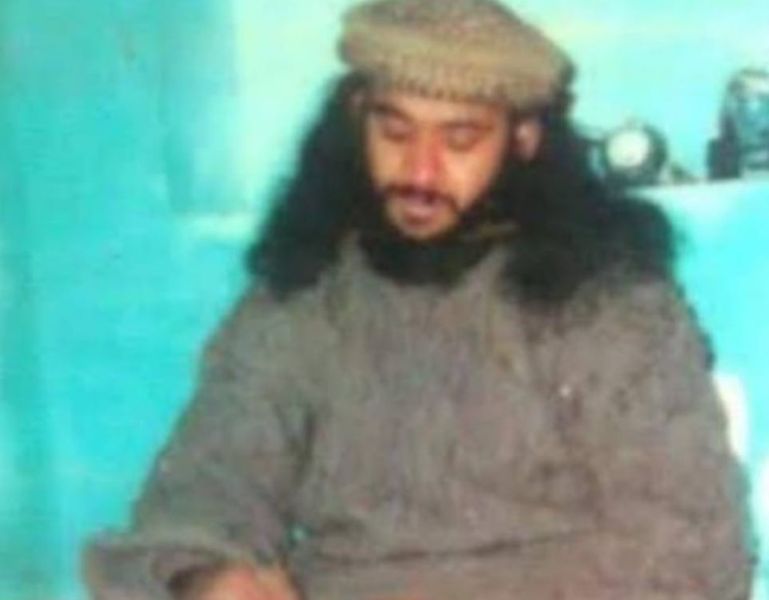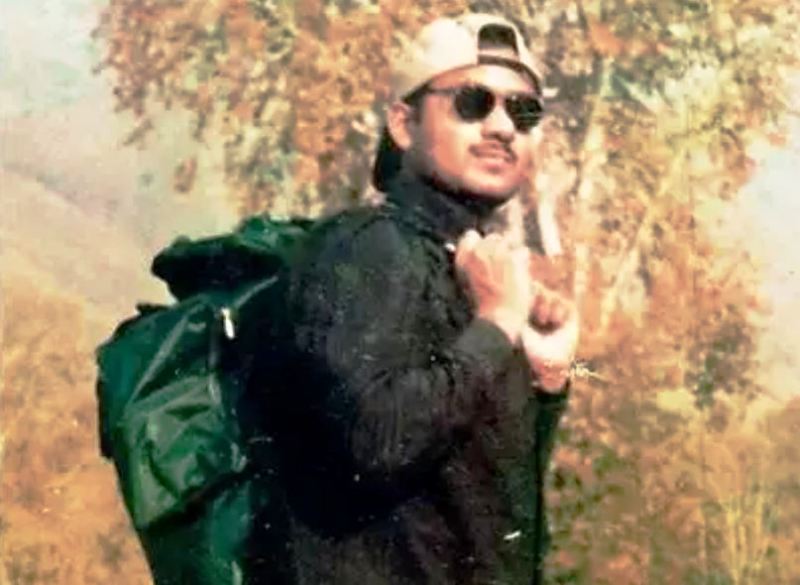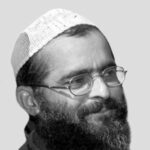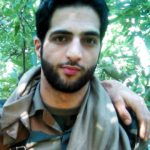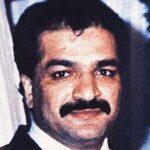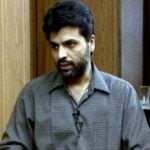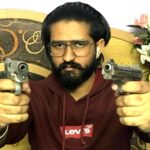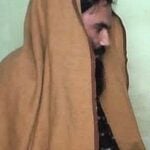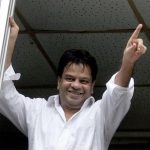Ghazi Baba Death, Wife, Children, Family, Biography
Quick Info→
Death Cause: Encounter
Death Date: 30/08/2003
Wife: Franky
| Bio/Wiki | |
|---|---|
| Birth Name | Rana Tahir Nadeem |
| Real Name | Shah Nawaz Khan |
| Other Name(s) | • Doctor • Saqlain • Abu Hijrat • Abu Jihadi • Shahbaz Khan • Sajid Jihadi • Mudasir Shahbaz |
| Profession | Terrorist |
| Known As | The mastermind of the 2001 Indian Parliament attack |
| Physical Stats | |
| Eye Colour | Black |
| Hair Colour | Black |
| Personal Life | |
| Birthplace | Bahawalpur, Punjab, Pakistan |
| Date of Death | 30 August 2003 |
| Place of Death | Srinagar, Jammu and Kashmir, India |
| Death Cause | Encounter (killed in operation by BSF) |
| Nationality | Pakistani |
| Religion | Islam |
| Sect | Sunni |
| Major Controversies | Massacre of Kashmiri Pandits in Anantnag: In 1988, Ghazi Baba led a brutal attack in Anantnag, Jammu and Kashmir, that resulted in the deaths of 25 Kashmiri Pandits. This incident deepened communal tensions and forced many remaining Pandits to flee the region. [1]Rediff Indian Airlines Flight IC-814 Hijack: Ghazi Baba was involved in planning and executing the hijacking of Indian Airlines Flight IC-814 in December 1999. The hijackers took the aircraft to Afghanistan and demanded the release of Maulana Masood Azhar and other terrorists. The Indian government eventually gave in to the demands. [2]Rediff Car Bomb Blasts in Srinagar: Ghazi Baba planned two car bombings in Srinagar in 2000. On 19 April 2000, a car bomb exploded at the Army's 15 Corps headquarters, which killed four army personnel and injured several others. On 25 December 2000, another suicide car bombing targeted a military installation, causing more casualities and damage. These attacks signalled a new wave of suicide-style tactics introduced by Jaish-e-Mohammed in the valley. [3]Rediff |
| Relationships & More | |
| Marital Status (at the time of death) | Married |
| Family | |
| Wife/Spouse | Franky |
| Children | (More than 1) |
| Parents | Father- Rana Talib Hussain (deceased) |
Some Lesser Known Facts About Ghazi Baba
- Ghazi Baba did his schooling in Bahawalpur, Punjab, Pakistan.
- Although Ghazi was not highly educated, he understood English and primarily spoke Urdu.
- He was married to Franky, a local woman from Safapora village in Srinagar. They had children together.
- Ghazi Baba joined the Afghan Jihad during the 1980s. He fought against the Soviet Armed Forces as part of Gulbuddin Hekmatyar’s Hezb-e Islami group. This early involvement in the Afghan conflict shaped his ideology and introduced him to the world of militancy.
- In the 1990s, he joined Harkat ul-Ansar (HuA), an Islamic militant group based in Pakistan and operating primarily in Kashmir.
- In 1994, when HuA general secretary and leader Mohammad Masood Azhar Alvi was arrested in Anantnag, Jammu and Kashmir, Ghazi Baba, then a senior member of the group, was given the job of getting him released.
- On 4 July 1995, Ghazi masterminded the kidnapping of six Western tourists and their two guides in Lidderwat, Pahalgam, Jammu and Kashmir. It was carried out by 40 HuA militants under the name ‘Al-Faran,’ which Ghazi provided to divert attention from HuA.
- The ‘Al-Faran’ kidnappers demanded the release of Masood Azhar and other jailed militants. When their demands were not met, they beheaded Norwegian hostage Hans Christian Ostrø on 13 August 1995.
- On 17 August 1995, an American hostage named John Childs managed to escape, while the remaining hostages were never found and were declared dead by the Government of Jammu and Kashmir on 28 January 2003.
- Ghazi Baba was a key planner in the hijacking of Indian Airlines Flight IC-814 on 24 December 1999, which was another attempt to secure the release of Masood Azhar, Ahmed Omar Saeed Sheikh, and Mushtaq Ahmed Zargar.
- Five militants from HuA seized IC-814 with 190 people onboard, flying to Amritsar, Lahore, Dubai, and finally Kandahar (Afghanistan). After seven days of negotiations, India agreed to release the three prisoners on 31 December 1999.
- After Masood Azhar’s release, the Harkat ul-Ansar (HuA) group was designated as a banned terrorist organisation by the U.S., which led the group to change its name to Harkat-ul-Mujahideen (HuM).
- Over the years, Ghazi became known by several aliases. His alias “Doctor” was widely recognised due to his involvement in the 1999 hijacking incident.
- Masood Azhar later founded Jaish-e-Mohammed (JeM) and appointed Ghazi Baba as its operational chief in Kashmir.
- Ghazi Baba was the first to deploy car bombs or Vehicle-Borne Improvised Explosive Devices (VBIEDS) in Kashmir as a JeM member. He planned two major car bomb attacks in 2000.
- One such attack took place on 19 April 2000, when a Maruti car packed with RDX exploded outside the 15 Corps Headquarters at Badami Bagh Cantonment in Srinagar. This marked the first-ever car bomb attack in the region.
- Another attack occurred on 25 December 2000, when a fiyadeen (suicide attacker) rammed an explosives-laden car into an army camp, killing at least 11 people.
- On 1 October 2001, under Ghazi Baba’s command, JeM militants carried out a deadly attack on the Jammu and Kashmir Legislative Assembly in Srinagar. A car packed with explosives rammed into the main gate, and three suicide attackers opened fire, killing 38 people.
- On 13 December 2001, Ghazi Baba masterminded a terror attack on the Indian Parliament in New Delhi. Five terrorists, disguised as security personnel, entered the Parliament complex with AK-47s, grenades, and explosives. They killed nine security personnel and one civilian before being gunned down.
- The 2001 Indian Parliament attack was aimed at targeting top Indian leaders. It brought India and Pakistan close to war, triggering a major military and diplomatic crisis. The incident made Ghazi one of India’s most wanted terrorists.
- After the Indian Parliament attack, Ghazi Baba went underground but continued to coordinate terrorist activities in Jammu and Kashmir, particularly targeting high-profile locations.
- He remained a major security concern for both the Intelligence Bureau (IB) and the Border Security Force (BSF), as they identified him as a primary threat.
- In 2003, Ghazi Baba planned an attack on the All India Radio office in Srinagar, which was part of his broader strategy to target crucial Indian institutions. During this time, he planned everything carefully, stayed surrounded by bodyguards, and always carried RDX for protection.
- Ghazi did not trust locals, so he always kept foreign bodyguards for his security.
- On 29 August 2003, the Border Security Force (BSF) launched an operation in Srinagar to capture Ghazi Baba, based on intelligence provided by an arrested Pakistani national and a local guide. It was led by Narendra Nath Dar Dubey, the officiating Commandant of the 61st BSF battalion.
- On 30 August 2003, the BSF surrounded his hideout in the Noor Bagh area and asked Ghazi to surrender. However, he refused and instead opened fire.
- Ghazi Baba and his associates were killed after a 10-hour gunfight on the same day, which ended their planned attacks, including one on the All India Radio office in Srinagar.
- After the operation, security forces recovered 20 RDX bombs, 22 detonators, 4 rockets, and a satellite phone from the building.
- Ghazi was extremely fearful about being poisoned, so he preferred cooking his own meals. He loved having Indian Punjabi dishes like chicken tikka and chapatis, using lots of ghee in his cooking.
- Ghazi Baba followed the Deobandi sect, a conservative Sunni Islamic movement known for its strict religious practices. He believed that dying while fighting India would make him a martyr.
- Despite being a strict Deobandi fundamentalist, Ghazi believed in astrology and wore three gemstone rings.
- In 2025, a Hindi action thriller film titled ‘Ground Zero,’ directed by Tejas Prabha Vijay Deoskar, was released. It was based on the 2003 operation led by BSF officer Narendra Nath Dar Dubey, which resulted in the death of Ghazi Baba.
References/Sources:

